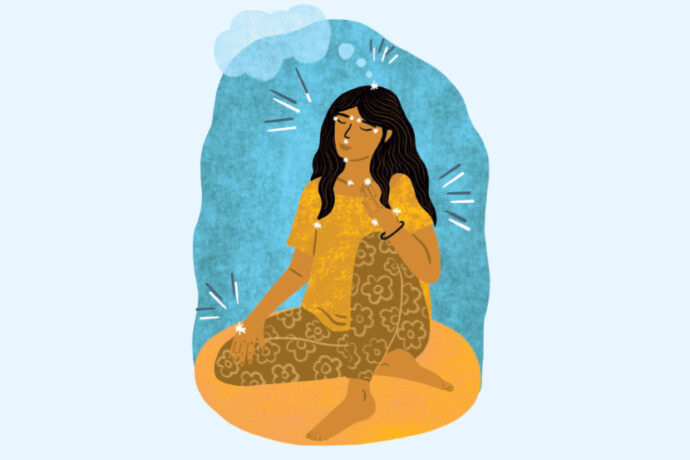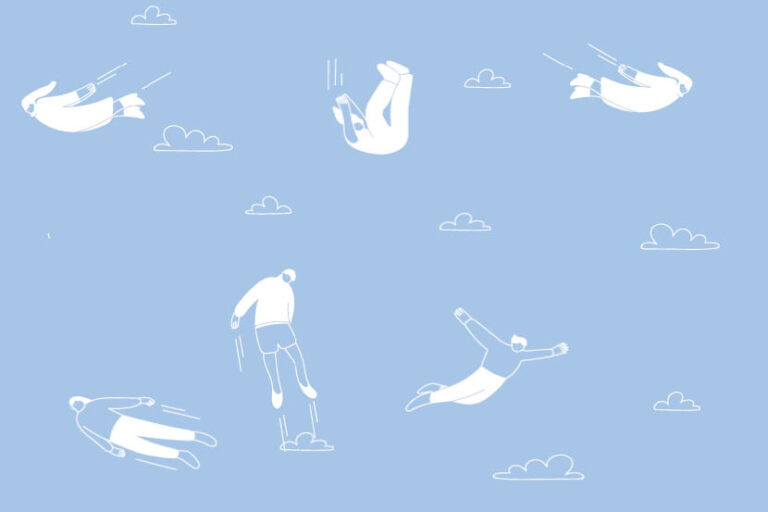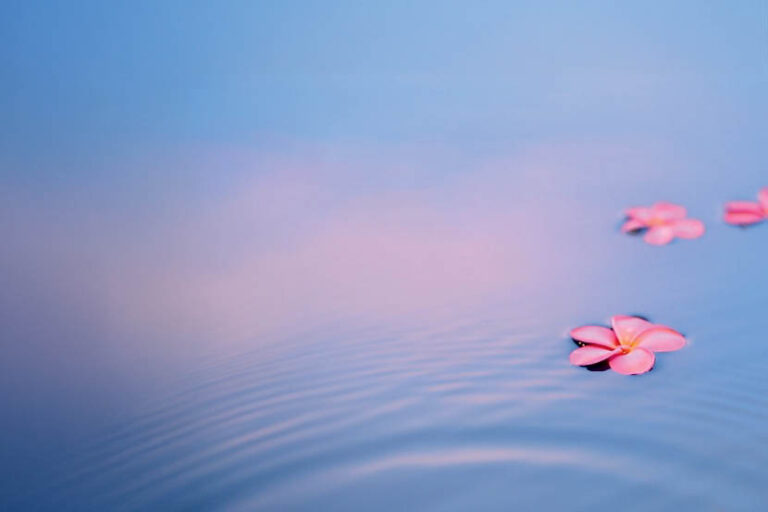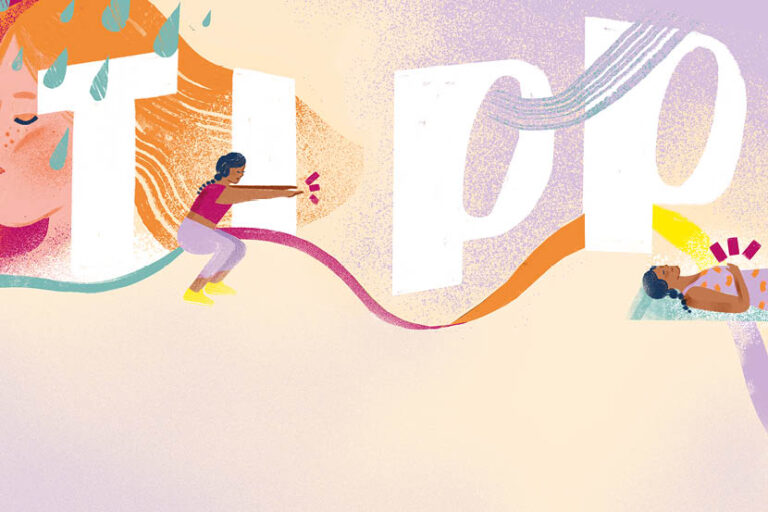
Perfection is subjective, so practising and embracing the opposite could be the kindest thing to do for yourself
‘When I look at a sunset,’ wrote Carl Rogers, American psychologist and founder of the client-centred approach to therapy we’re familiar with today, ‘I don’t find myself saying: “Soften the orange a little on the right-hand corner, and use a little more pink in the cloud colour.” I don’t do that. I don’t try to control a sunset. I watch with awe as it unfolds.’
Like sunsets, we’re becoming. It’s the process that makes us wonderful and perfect, even if in any given moment we need (or think we need) a bit of editing. Perhaps this is why photos of sunsets are so often disappointing. The unfolding captures our heart, but our photos seem, by comparison, dull and still.
It might also be why we can agree it was the perfect sunset but differ on the moment of perfection. Some of us feel most moved by the subtle promise of the sky’s early rosy tones, while others are dazzled by the impossible intensity
of its near-neon peak.
Present imperfect
Perfection is elusive. We know it and desire it, but often it can mislead and confound us. Artists probably know this better than anyone. Katsushika Hokusai, best known for The Great Wave off Kanagawa wrote: ‘From the age of six, I had a passion for copying the form of things … yet of all I drew, by my 70th year, there is nothing worth taking into account.’ Hokusai created around 30,000 sketches, paintings, and prints in his life. On his deathbed, he’s said to have exclaimed: ‘Just another five more years, then I could become a real painter.’
If these two experiences teach us anything, it’s that one person’s perfection will almost certainly seem flawed to another. The paradox of the imperfect perfect makes intuitive sense because we experience it in nature every day. As author Alice Walker noted: ‘In nature, nothing is perfect and everything is perfect.
Trees can be contorted, bent in weird ways, and they’re still beautiful.’ This applies just as well to people, who we love all the more for their scars and freckles, sorrows and cringe-worthy jokes. You’d think there would be a handy phrase to help us pass on this wisdom, but instead of “imperfect is perfect” we have “practice makes perfect”.
Perfection myth
Practice makes perfect is a story we’ve been telling one another for at least 500 years, and according to a 2014 survey of childhood wisdom, it’s one of the most influential sayings passed from adults to children. Can you remember the first time you heard the phrase? Could you hazard a guess at how many times you’ve heard it in your life? You might say it too from time to time.
The phrase is so neat and has such pleasing symmetry and alliterative flair that it slips under our truth radar unquestioned. But the story is impossible. No one could say Hokusai didn’t practise enough, but he never felt he or his work achieved perfection. So, what hope is there for the rest of us?
The things we say over and over again have great power. Like a prayer or mantra, an oft-repeated phrase echoes inwards, shaping our belief system, and outwards, influencing others and the world we share. If we practise and we don’t achieve perfection in what we do, or worse, in who we are, we’re likely to feel discouraged at best. Over a period of time, our small failures can snowball into self-doubt, anxiety, depression, shame, guilt, and fear.
The gentle art of getting it wrong means knowing our efforts will be imperfect, but choosing to try anyway. Somewhere in the process, when we least expect it, we’ll experience something akin to perfection.
VERITAS: seven ways to practise imperfection
At first glance, this approach might appear to mean not trying your best, but it’s more about being kind to yourself in the pursuit of any goals or the undertaking of fresh tasks. The ways of being in the mnemonic “veritas”, outlined in the points below, are truthful and non-judgemental. Recalling and using them can help you feel more able to meet difficult tasks and situations.
If being vulnerable or accepting is too hard today, however, remember to practise self-compassion. Put your feet up, grab a cup of tea and a good book, know you need this space and don’t feel guilty about it.
1. Vulnerability: looking beneath your perfect
2. Enough is all you need
3. Random acts of kindness
4. Intention: towards what are you pointing your power?
5. Thankfulness: noticing the small perfections in each day
6. Acceptance: let the light in
7. Self-compassion: there is no flow without ebb
Vulnerability: looking beneath your perfect
It’s vulnerable to make an effort. Sitting an exam, painting a landscape, meeting someone new. Even cooking a meal or repairing a puncture invites vulnerability because when we begin, we don’t know what will happen. We hope for success, whether it comes dressed as a high exam mark or a compliment, however there’s every chance we’ll end up with a burnt pan or a flat tyre. But a triumph is not the point.
As renowned author and professor Brené Brown says, the more we “show up” and “step up”, the greater our courage and resilience become. And when we shift our focus from the illusion of perfect success to imperfect grounding experiences, we feel more able to risk vulnerability and embrace more of what life has to offer.
Enough is all you need
When looking for wisdom on the art of moderation, the Roman emperors may not be an obvious port of call. But Marcus Aurelius’s Meditations, a series of personal writings, are honest, humble, and kind. ‘Life is short,’ he wrote, grieving the loss of his wife, ‘that’s all there is to say. Get what you can from the present – thoughtfully, justly.’
As a Stoic, Aurelius practised ‘unrestrained moderation’ in all life’s sensory and material pleasures, valuing a clear head and self-restraint over excess and indulgence. ‘Very little is needed to make a happy life,’ he wrote, ‘it is all within yourself, in your way of thinking.’
Random acts of kindness
Doing good is good for you. Random acts of kindness help other people and they can also improve personal wellbeing. People taking part in studies of altruism say they feel physically healthier, less stressed, and happier as a result of volunteering.
The trick is to do good deeds without fuss and in moderation. If we advertise our kindness, we may unconsciously seek the reward of praise, and if we overdo it, we might start to feel grudging and unappreciated. Tibetan spiritual leader the Dalai Lama likens altruism to a seed, which, when cultivated, will blossom into forgiveness, tolerance, and the confidence to overcome fear and insecurity.
Intention: towards what are you pointing your power?
‘You can do anything, but not everything.’ Every fridge door should be inscribed with influential thinker David Allen’s aphorism. Trying to do one thing perfectly is enough to compromise self-esteem, but trying to do many things perfectly is impossible and may only result in stress and failure.
The secret is to start small and start now. Write a list of all the things that are important for you to do. And “important” is the key here, with the most meaningful things going at the top, not the most pressing. ‘Pursue what catches your heart,’ says author Roy T Bennett, ‘not what catches your eyes.’ Next, divide big tasks into small chunks and feel good about ticking them off.
Thankfulness: noticing the small perfections in each day
A butterfly at your window, a call from an old friend, a picnic by the ocean. Being thankful runs so much deeper than politeness. In recent years, the distinction has been made by using the word gratitude to denote a more deliberate practice of thankfulness. We know from research that people who practise gratitude regularly notice an improvement in their mood, sleep, physical and mental resilience, patience, and relationships.
Considering it takes just a few minutes each day, those benefits really are transformative. There is no right way to practise, but the words you choose to frame your thanks are likely to affect how comfortable you feel and how much you benefit. Some people prefer to reflect on what went well, while others give thanks. For some people, a list of three things is enough and for others, the deeper dive of a piece of reflective or creative writing is more meaningful. You could even sketch your thanks as a relaxing way to end each day.
Acceptance: let the light in
Life is filled with suboptimal moments: rainy summer holidays, missed trains, and broken mugs being a few of the more trivial ones. Resigning ourselves to a life of these is awful, tolerance buries sadness or anger that may harm us later, and as for understanding, well, accidents happen.
By describing the forces that rock us and recognising them for what they are, without resignation, tolerance, or understanding, it is possible for us to choose how we respond and allow ourselves to find peaceful acceptance. As musician Leonard Cohen sang: ‘There is a crack in everything, that’s how the light gets in.’
Self-compassion: there is no flow without ebb
The first six practices on this list require some degree of effort, and this is only possible when the foundations of self-compassion have been laid first. This final practice is for the other times. The occasions when we falter, go inwards, or ebb. This is a period for self-compassion, which will look different to each of us. It might be a bath or surf, a long walk, a quiet film, or a night out. The point, as American Tibetan Buddhist nun Pema Chödrön teaches, ‘isn’t some kind of self-improvement project or ideal … it starts and ends with having compassion for all those unwanted parts of ourselves.’ All those perfect imperfections.
Words by Malachy Dunne


















